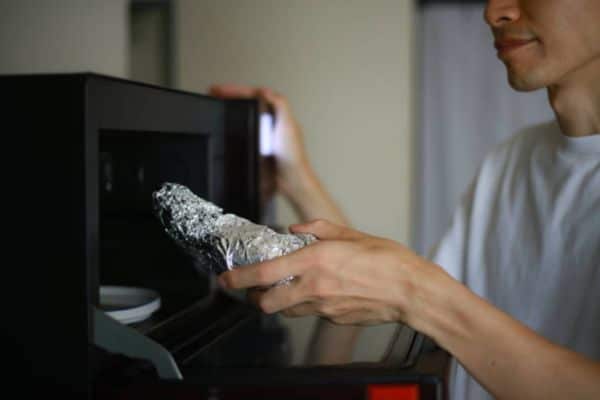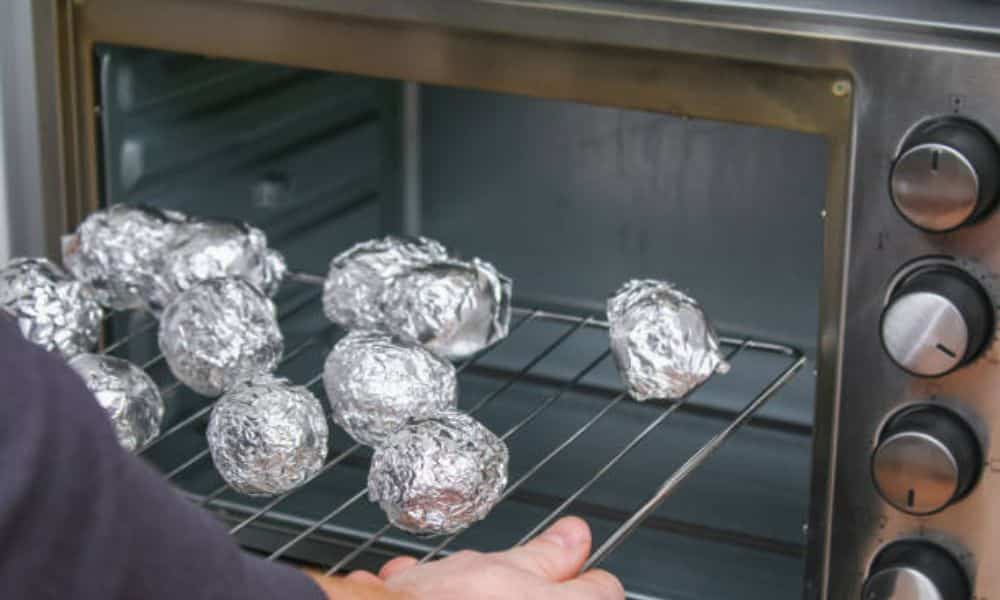Many people wonder can you use aluminum foil in a toaster oven, and I asked the same thing the first time I tried to stop the mess on my tray. I learned fast that foil reacts in ways I didn’t expect, and that small test pushed me to try more.
Over time, I tried lining trays, wrapping food, and even checked whether can you put aluminum foil in a toaster oven without trouble. Some ideas worked well, others felt risky.
This guide shares those simple lessons so you can cook with more comfort, less stress, and better results.
Why People Use Foil in a Toaster Oven (And Why It Seems Helpful at First)
Foil often looks like the simplest way to keep a toaster oven clean. A smooth sheet covers crumbs, stops sauces from dripping, and makes the tray look fresh again. Many people place it down for quick cleanup, and the shiny surface also reflects heat, so food can brown a little faster.
The idea feels safe and convenient, though the reaction inside a small oven can shift fast. Foil can curl, tighten, or sit too close to the heating coils. The shiny surface can push heat in unexpected directions, raising the temperature more than expected.
So, Can You Use Aluminum Foil in a Toaster Oven?

A short, clear guide helps the most. You can use aluminium foil in a toaster oven only on a flat tray and never near the coils. The space is tight, so the metal heats fast and reacts more than people expect.
Manuals stay strict for a reason. Real use shows the same pattern. A regular oven spreads heat wide, though a toaster oven pushes it close and intense. That tight space makes foil curl, shine hotter, and shift in ways a big oven never shows.
Many people ask Can you put tin foil in a toaster oven or can you put aluminum foil in a toaster oven in a safe way. A flat piece on a tray stays calm. A loose sheet near the top does not.
When Aluminum Foil Is Safe to Use (My Tested Scenarios)
A few setups stay safer than others. Lining the crumb tray does not stay safe at all. Heat gathers under the foil, edges lift, and the metal sits too close to the bottom. That mix turns rough fast.
A baking tray works better. A flat sheet on the tray stays stable and handles heat in a calm way. The metal still needs space around it, though the reaction stays smoother than the crumb tray.
Wrapping food works well in most cases. A loose wrap with open space lets heat move around the packet. Small food packets also stay safe, as long as they sit flat and low.
When Aluminum Foil Is NOT Safe (Avoid These Mistakes)

The foil turns unsafe the moment it touches the heating coils. The metal reacts fast, sparks grow, and the oven faces instant strain.
Covering the bottom of the oven also creates trouble. Heat gathers under the foil, air stays trapped, and the surface grows hotter than normal. The oven needs a clear path for clean airflow, and foil blocks that path.
Foil on the inner walls causes the same stress. The metal reflects heat back toward the coils, raising the temperature far beyond the level the oven was built to handle. This creates fire risk, edge curls, and small dark spots that signal overheating.
Can You Use Parchment Paper in a Toaster Oven? (Safer Option?)
The melting point of parchment paper stays higher than many expect. Most sheets hold steady up to a medium level of heat, which keeps the surface calm during light cooking.
So can you use parchment paper in the best toaster oven in a safe way? A flat sheet on a tray stays stable. The paper handles gentle heat well and gives food a smooth, clean base.
The paper starts to struggle near the coils. Strong heat dries the edges fast and small dark marks appear. A sheet too close to the top curls and grows crisp, which signals stress.
Best Safe Alternatives to Aluminum Foil (What I Use Now)

Small silicone mats fit well in a toaster oven. The surface stays steady, handles heat with ease, and keeps food from sticking. A mat also rests flat, so the oven gets clean airflow without sharp reactions from metal.
Short baking sheets help a lot too. The tray shape holds food in place and keeps heat balanced. No shine, no sudden curls, just a simple surface that handles daily cooking without stress.
Oven-safe glass dishes bring a smooth, gentle heat flow. The glass warms in a calm way and supports sauces, oils, and soft food with no burn spots. The weight also keeps the tray stable inside the oven.
Air-fryer parchment gives another safe path. The small holes let warm air move around the food, creating a clean base that stays steady through light roasting and simple baking.
Tips for Baking in a Toaster Oven Without Problems

Smooth results come from simple habits. Baking in a toaster oven stays easier with a short warm-up. A calm preheat helps the tray settle and brings steady heat before the food goes in.
A modest temperature also keeps things balanced. The small space reaches high heat fast, so a gentle setting gives more control and prevents sharp browning.
Food cooks better with space around it. A little air flow helps the top and bottom heat spread without dark corners or soft centers. A light wipe after each use also keeps the oven clean and stops crumbs from burning on the next round.
Final Thoughts
Foil brings comfort in small moments, though it needs care. A flat piece on a tray stays calm. A loose sheet near the coils turns risky. The metal reacts fast in a tight space, and the heat grows stronger than it looks.
My own tests taught a clear lesson. Simple setups work. Raised edges and tight corners do not. A steady tray, open space, and gentle heat protect the oven and keep each meal smooth.
Each toaster oven follows its own rules, so a quick look at the manual keeps things safe. The guide explains the limits and helps the oven last longer.


